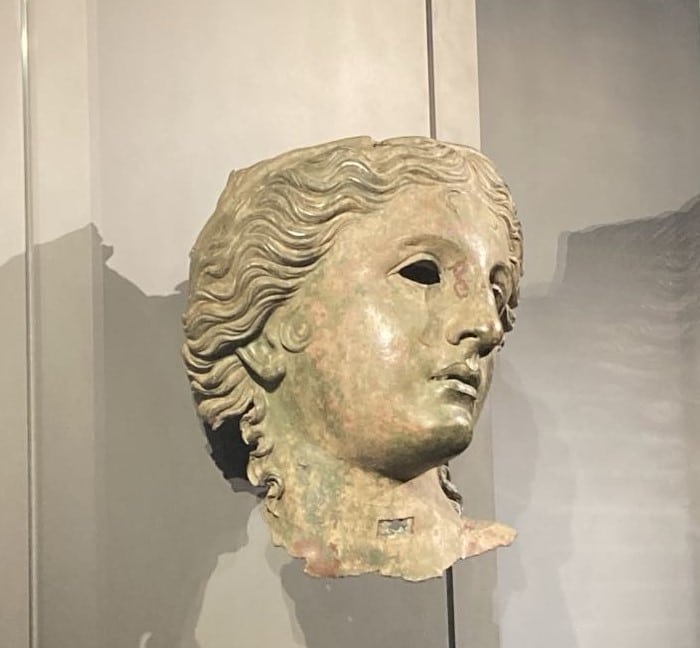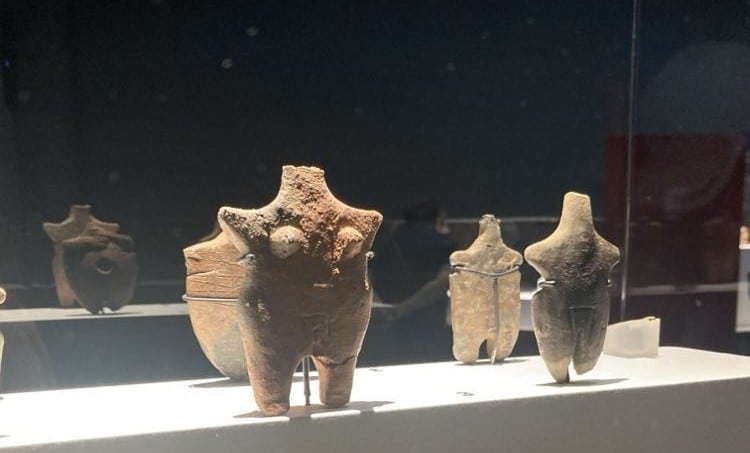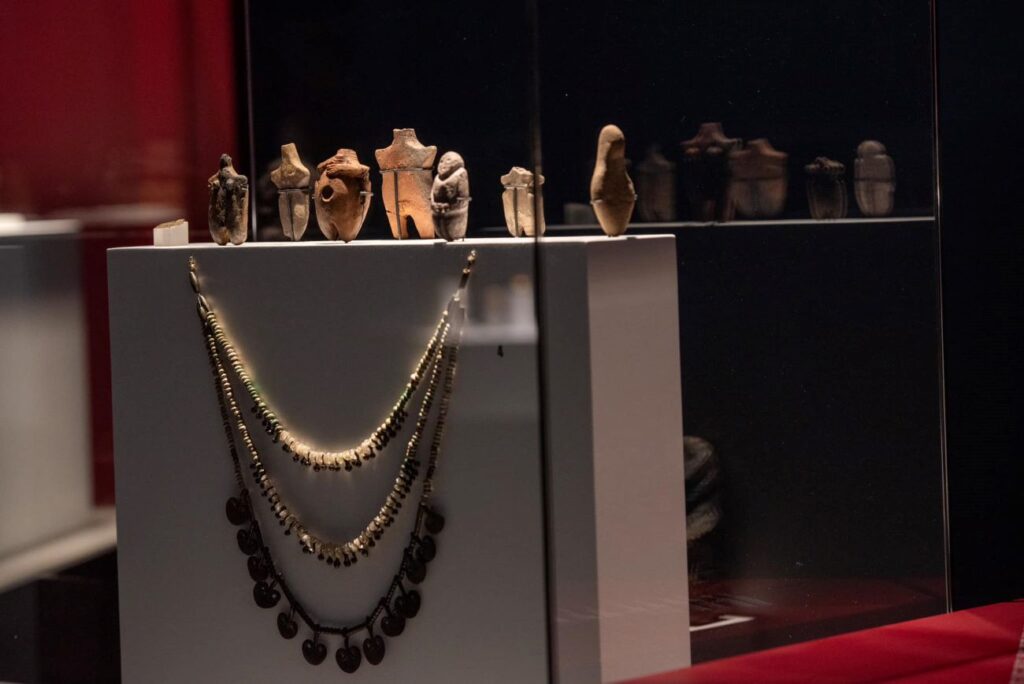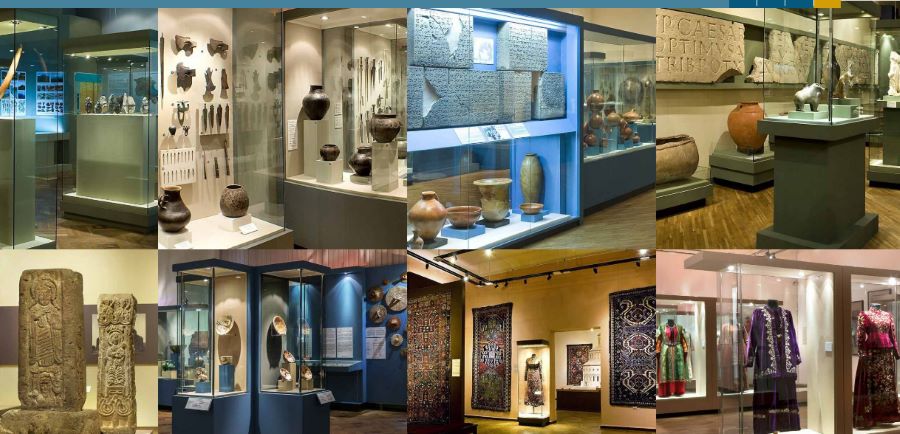
After centuries abroad, the magnificent bronze head of the Armenian Goddess Anahit has finally returned home.
This ancient relic, a symbol of Armenia’s rich cultural heritage, was brought back from the British Museum and is now on display at the History Museum of Armenia in Yerevan.
The return of this statue has sparked immense national pride and curiosity, attracting hundreds of people. Tourists and locals alike are flocking to the museum to witness the iconic statue, reconnecting with Armenia’s deep historical roots.
How Did Anahit Statue Return to Armenia?
The historic return of the bronze head and left hand of the Armenian Goddess Anahit marks a significant cultural event for Armenia. Loaned from the British Museum, these relics are now the centerpiece of a six-month exhibition titled “Mother Goddess: From Anahit to Mary” at the History Museum of Armenia.
The exhibition, which opened on September 21, 2024—Armenia’s Independence Day—will run until March 21, 2025. This collaboration between Armenia and the British Museum is an important milestone. This elevates the museum’s international profile and draws both local and international visitors to witness this iconic symbol of Armenia’s cultural heritage.
Armenia’s Minister of Education, Science, Culture, and Sports, Zhanna Andreasyan, hailed the event as a symbolic moment. She noted that the exhibition not only elevates museum life but also fosters cultural internationalization. Besides, the exhibition highlights the historical role of women in Armenian society, a key theme that aligns with the celebration of the country’s independence.
How to See the Statue of Goddess Anahit?

To see the iconic statue of Goddess Anahit, visit the special exhibition hall at the History Museum of Armenia. The entry ticket costs 5,000 drams, granting access not only to this exhibit but also to the entire museum.
Alongside Anahit, the hall showcases a rich collection of figurines from the Early Bronze Age, including representations of the Mother Goddess in the Armenian Highlands.
Visitors can also admire the Early Iron Age statue and the renowned marble statue of Aphrodite, known as the Artashat Aphrodite, dating back to the 2nd to 1st century BC.
Goddess Anahit

Photo credit: History Museum of Armenia
Anahit, revered as the goddess of fertility, healing, wisdom, and water, holds a significant place in Armenian mythology. In earlier times, she was also considered a goddess of war. By the 5th century BCE, Anahit became one of the most important deities in Armenia, alongside Aramazd. Her worship likely spread to Armenia during the Median invasion or early Achaemenid period, when Armenian culture adopted influences from the Iranian goddess Anahita.
Anahit’s temples were established in key Armenian cities such as Erez, Armavir, Artashat, and Ashtishat. The most famous of these temples was in Erez, which was regarded as the wealthiest and most prestigious in Armenia. The annual festival in her honor celebrated in the month of Navasard, drew large crowds for music, dancing, and competitions. Pilgrims also flocked to her temples seeking healing, as Anahit was closely associated with medicine. The head of her gilded bronze statue became a symbol of ancient Armenian medical traditions.
Historical accounts emphasize the grandeur of Anahit’s temples. Roman historians, including Pliny the Elder, documented how Roman soldiers destroyed a massive gold statue of Anahit in Erez, taking its fragments as spoils. Despite this loss, the Armenians continued to honor Anahit, rebuilding her statue and preserving her worship until the advent of Christianity in Armenia.
History Museum
A visit to the History Museum of Armenia offers a fascinating journey through the nation’s rich cultural and historical heritage. In general, museums have over 400,000 archaeological and ethnographic artifacts. The oldest artifacts are from prehistoric times.
One of the highlights is the oldest shoe found in Areni 1 cave. It’s a 5,500-year-old leather show. Interestingly you can find its replica which is played next to the real exhibit and can even try it. Besides, here you can find old wagons dating back to 2000 BC. The museum offers some glimpse into the excavations offering videos of how these rare pieces were found.
The museum also showcases artifacts from various historical periods, including items from the Bronze and Iron Ages, medieval manuscripts, and relics from Armenia’s Christian heritage.
Another highlight is the impressive coin collection, with some of the oldest pieces dating back to the 5th century BC, providing insight into the economic and political history of ancient Armenia. The ethnographic section is equally captivating, featuring intricate examples of traditional Armenian jewelry, embroidery, lacework, and national costumes.
History and Archeology with Levon Travel

Levon Travel, with over 30 years of experience in organizing tours in Armenia. The travel agency offers specialized archaeological and history tours for enthusiasts eager to explore the country’s ancient heritage.
These tours take visitors to some of the most significant archaeological sites, including ancient settlements, medieval fortresses, and UNESCO-listed landmarks.
Expert guides provide in-depth knowledge about Armenia’s rich history, from prehistoric times to the early Christian era. There are some ready itineraries or you can tell about your preferences and the agency will offer a custom-made tour.
